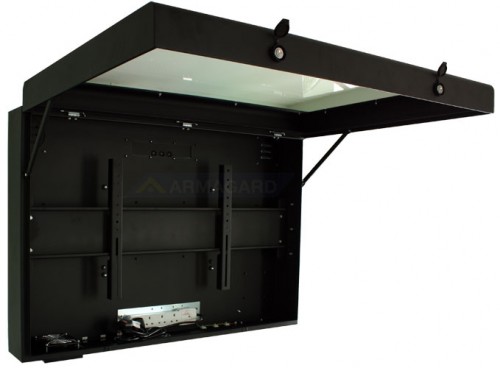Protecting Digital Signage against Damage
Posted by: Richard Williams | Posted on: | 0 Comments
The falling price of LCD TVs is perhaps responsible for the huge rise in their use as digital advertising and signage systems. However, just because these devices are now comparatively inexpensive nobody wants to find that their digital signage screen has been stolen, damaged or defaced.
Protecting digital advertising from theft, damage and theft is vital, especially for screens erected in outdoor locations. Recovering a return on investment can be tricky enough with digital advertising campaigns so the last thing anybody needs is the cost of having to replace screens.
Protection from impacts
Whether it’s accidental or a deliberate attack, LCD TVs are vulnerable to impact. Not only can a sudden shocks cause the device to stop working, a TV screen can easily be smashed causing a hazard for passers-by; something the digital signage owner may be responsible for.
Impact protection is a must for digital signage and this is easily achieved by ensuring whatever LCD enclosure is used is manufactured from solid steel and is rugged by design.
Protecting the screen is perhaps one of the most important areas to think about. A damaged screen will not be a hazard, as mentioned above but screen damage will disable the TV permanently. Polycarbonates are often used as protective screens for LCD TVs as they are shatterproof.
Theft protection
Despite the falling cost of flat screen TV devices, such as LCDs and plasmas, they are still attractive items for thieves. Any outdoor digital sign in public or outdoor locations needs to have some defence from attempts at theft. A steel LCD enclosure fitted with anti-tamper locks is probably the most secure method possible of securing outdoor digital signage.
However, some installers of highly expensive outdoor signage systems go further and install security systems such as CCTV to keep an eye on the signage but this obviously can increase he investment and make it more difficult to achieve a return on investment.
Post shortlink:
Popular Products
LCD Enclosure
Need armor for your LCD/LED screen(s)? Outdoors or inside the versatile LCD enclosure protects against thieves, vandals & the weather. Installation idea: NFL stadiums.
Outdoor Digital Signage
Exclusive 46” outdoor screen protection. Dubbed the ‘Totem’, due to its distinct design, it repels damage threats, but attracts audiences. Installation idea: Drive-thru restaurants.
Portrait Flat Panel Enclosure
Safeguard your eye-level advertising display screen(s), indoors or outdoors. Completely customizable, add exciting features like touch screen technology. Installation idea: Restaurant frontages.
Indoor Digital Signage
Popular purchase for retail outlets! Great for ‘point of sale’ persuasion, boost your brand with static & motion advertising from a single unit! Installation idea: Mall of America.





